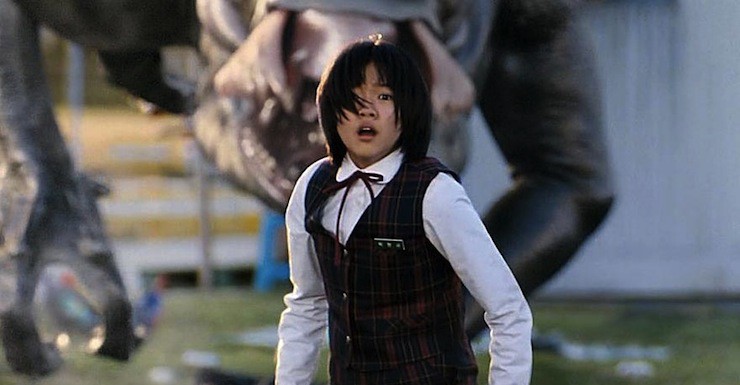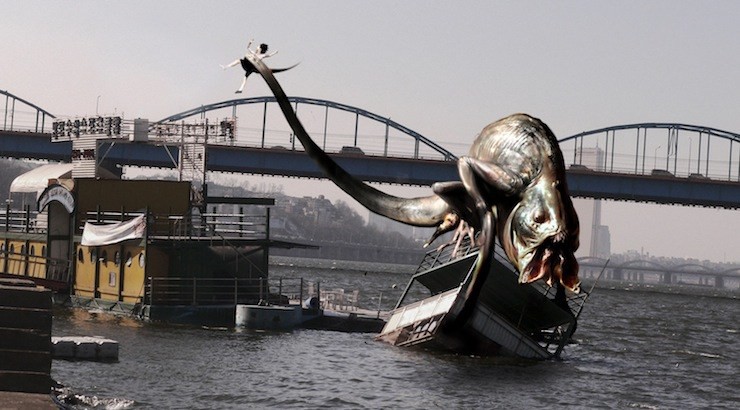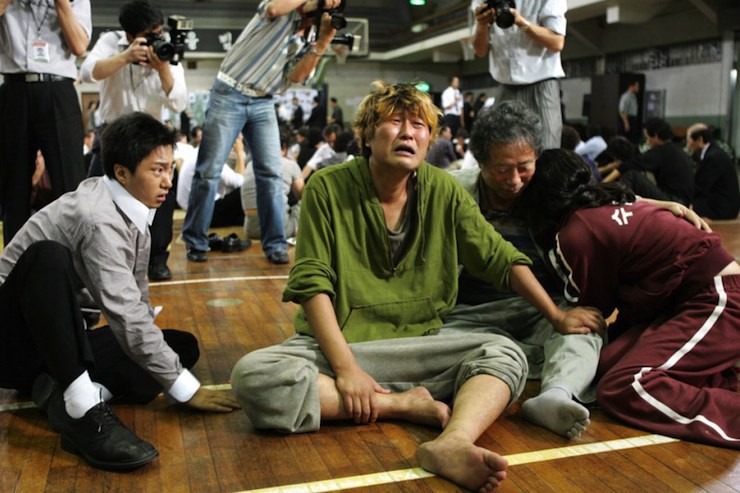It’s that time of the year again. There’s a slight chill to the late summer evenings. Leaves are starting to bring out their fall colors. Each day is just a bit shorter than the last. We can all feel what these changes signify. No, not going back to school, but that it’s the season for monster movies! Between now and Halloween I’ll be highlighting ten of the best toothy, sharp-clawed, and mutated aberrations to shred the silver screen. Some are old classics, others are newcomers, but all are awesome.
“Simply put, so far, there is no virus whatsoever.” Let’s talk about the fish monster from The Host.
This one was a little bit of a hard sell when it was my turn to pick movie night. “Hey! Let’s go to a theater in the middle-of-nowhere New Jersey to see a South Korean monster movie!” Maybe it was because the pitch threw my wife off-guard, but she agreed and we were treated to one of the best monster movies in recent memory, if not of all time.
The setup, inspired by a real incident, is straight out of 1970s eco-horror. An American military doctor orders his Korean assistant to dump bottle after bottle of formaldehyde into drains that seep out into the Han River. In real life, no monsters came scuttling out of the river, but in the film all that toxic waste creates a multi-legged fishy monster that munches on a few people at a riverside park before abducting a young girl named Hyun-seo (Go Ah-sung) and retiring to Wonhyo Bridge to digest.
The monster is fantastic. Designed by the Weta Workshop—of The Lord of the Rings and King Kong fame—the creature is a galumphing piscine nightmare with a mouth that looks like it was designed by Georgia O’Keeffe. Best of all, there’s none of the traditional “monster as POV shot” hiding that’s so classic in the genre. We see the monster in all its slimy glory almost immediately, chasing down victims in broad daylight. And if you’ve ever wondering how monsters can eat so many people without filling up on hard to digest bones, well, let’s just say the film tosses up an answer in spectacular fashion.
But to boil The Host down to a fish-monster flick is too simple. The heart of the movie is Hyun-seo’s family, led on by her father Park Gang-du (Song Kang-ho), and their quest to get her back. Their mission takes The Host out of well-trodden territory and makes it something different—a darkly comic political satire.
While the toothy monster itself is bad enough, the real villains in the film are the inept, nefarious, and seemingly endless bureaucrats who make the most of monster-generated hysteria. Officials immediately claim that the monster’s blood spreads a terrible new disease even though not so much as a sniffle can be attributed to the creature, and Gang-du becomes public enemy number one as he and his family escape from quarantine so they can continue the search for Hyun-seo.
Of course, there’s no virus. It’s nothing but a rumor used to sow fear and give those in power a just that much more leverage. “Why didn’t you call the police?” becomes a one-liner rather than a serious question, and, in the end, all the confusion seems to be a made-to-order cover for the American military to test a new chemical weapon dubbed “Agent Yellow” without any concern for what it might do to anyone in the blast radius that isn’t a killer terrestrial trout.
This wider story is what makes The Host an instant classic. The movie doesn’t ride on the slippery tail of the monster. It explores the propaganda, madness, and confusion that the arrival of such a creature would immediately stir. For some, like Gang-du and his family, such events can draw out the best in ourselves. But for many of us, living in the shadow of a monster only brings out the worst we have squirming inside.
Brian Switek is the author of My Beloved Brontosaurus (out in paperback from Scientific American/Farrar, Straus and Giroux) and Written in Stone. He also writes the National Geographic blog Laelaps.












